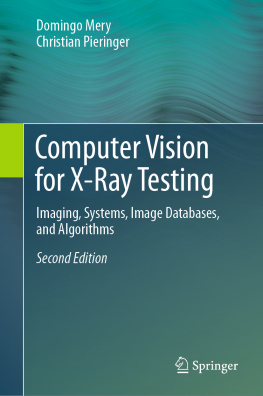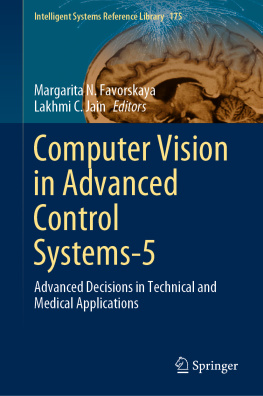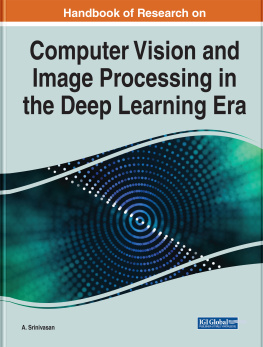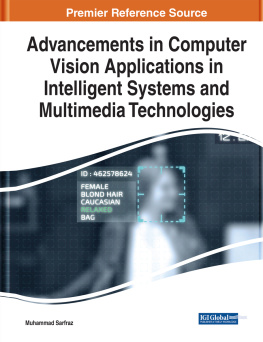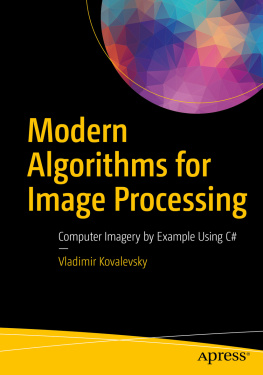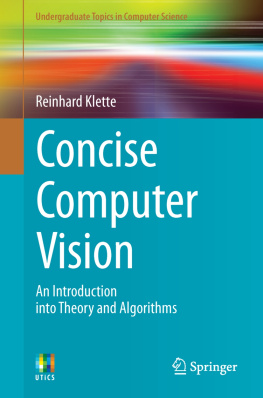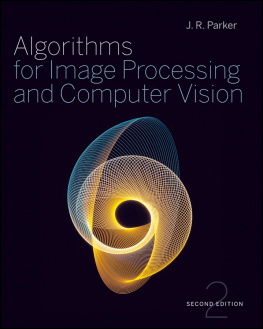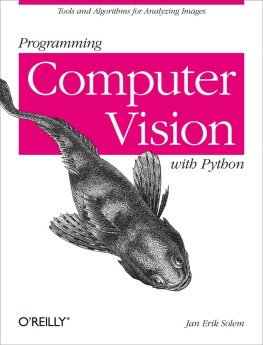Domingo Mery - Computer Vision for X-Ray Testing: Imaging, Systems, Image Databases, and Algorithms
Here you can read online Domingo Mery - Computer Vision for X-Ray Testing: Imaging, Systems, Image Databases, and Algorithms full text of the book (entire story) in english for free. Download pdf and epub, get meaning, cover and reviews about this ebook. year: 2021, publisher: Springer International Publishing, genre: Computer. Description of the work, (preface) as well as reviews are available. Best literature library LitArk.com created for fans of good reading and offers a wide selection of genres:
Romance novel
Science fiction
Adventure
Detective
Science
History
Home and family
Prose
Art
Politics
Computer
Non-fiction
Religion
Business
Children
Humor
Choose a favorite category and find really read worthwhile books. Enjoy immersion in the world of imagination, feel the emotions of the characters or learn something new for yourself, make an fascinating discovery.
- Book:Computer Vision for X-Ray Testing: Imaging, Systems, Image Databases, and Algorithms
- Author:
- Publisher:Springer International Publishing
- Genre:
- Year:2021
- Rating:3 / 5
- Favourites:Add to favourites
- Your mark:
- 60
- 1
- 2
- 3
- 4
- 5
Computer Vision for X-Ray Testing: Imaging, Systems, Image Databases, and Algorithms: summary, description and annotation
We offer to read an annotation, description, summary or preface (depends on what the author of the book "Computer Vision for X-Ray Testing: Imaging, Systems, Image Databases, and Algorithms" wrote himself). If you haven't found the necessary information about the book — write in the comments, we will try to find it.
Domingo Mery: author's other books
Who wrote Computer Vision for X-Ray Testing: Imaging, Systems, Image Databases, and Algorithms? Find out the surname, the name of the author of the book and a list of all author's works by series.
Computer Vision for X-Ray Testing: Imaging, Systems, Image Databases, and Algorithms — read online for free the complete book (whole text) full work
Below is the text of the book, divided by pages. System saving the place of the last page read, allows you to conveniently read the book "Computer Vision for X-Ray Testing: Imaging, Systems, Image Databases, and Algorithms" online for free, without having to search again every time where you left off. Put a bookmark, and you can go to the page where you finished reading at any time.
Font size:
Interval:
Bookmark:


This Springer imprint is published by the registered company Springer Nature Switzerland AG
The registered company address is: Gewerbestrasse 11, 6330 Cham, Switzerland
To Ximena, Anais and Valeria,
who show me everyday
the X-rays of love
Domingo
To Mara Isabel, Dante, and Laura,
thank you for accompanying me
through the adventures of this travel
called life
Christian
For the second edition of this book, we had once again thought of asking Reinhard to write the foreword. We have no doubt that he would have agreed to do so with great pleasure and enthusiasm. However, he left us and said goodbye to this world in April. For this reason, in honor of him, we have preferred to leave this foreword blank, as a sign of how much we miss him.
The wavelengths of X-rays are far shorter than those of visible light and even shorter than those of ultraviolet light. Wilhelm Conrad Rntgen (18451923) was awarded the first Nobel prize in Physics in 1901 for his contributions to the detection of electromagnetic radiation, and to the generation of X-rays, which are a form of electromagnetic radiation. Radiographs are produced by having X-rays, emitted from a source, geometrically assumed to be a point in three-dimensional (3D) space, recorded on a screen. This screen might have a slightly curved surface, but we can also see it (via defined mapping) as an image plane.
X-ray technology provides a way to visualize the inside of visually opaque objects. Pixel intensities in recorded radiographs correspond basically to the density of matter, integrated along rays; those readers who are interested in a more accurate description may wish to look up the interaction of X-rays with matter by way of photo-absorption, Compton scattering, or Rayleigh scattering by reading the first chapter in this book.
X-ray technology aims at minimizing scattering, by having nearly perfect rays pass through the studied object. Thus, we have a very particular imaging modality: objects of study need to fit into a bounded space, defined as being between source and image plane, and pixel intensities have a meaning which differs from our commonly recorded digital images when using optical cameras.
When modeling an X-ray imaging system we can apply much of the projective geometry, mathematics in homogeneous spaces, or analogous parameter notations: we just need to be aware that we are looking backwards, from the image plane to the source (known as projection center), and no longer from the image plane into the potentially infinite space in front of an optical camera. Thus, it appears that the problem of understanding 3D objects is greatly simplified by simply studying a bounded space: using a finite number of source-plus-screen devices for recording this bounded space; applying photogrammetric methods for understanding multi-view recordings, and applying the proper interpretation (e.g., basically density) to the corresponding pixel values. Thus, this very much follows a common scenario of a computer vision, while also including image preprocessing and segmentation, object detection, and classification. The book addresses all of these subjects in the particular context of X-ray testing based on computer vision.
The briefly sketched similarities between common (i.e., optical-camera-based) computer vision and X-ray testing techniques might be a good motif to generate curiosity among people working in computer vision, in order to understand how their knowledge can contribute to, or benefit from, various methods of X-ray testing.
The book illustrates X-ray testing for an interesting range of applications. It also introduces a publically available software system and an extensive X-ray database. The book will undoubtedly contribute to the popularity of X-ray testing among those in the computer vision and image analysis community and may also serve as a textbook or as support material for undertaking related research.
The second edition of this book began to be written in the middle of 2019. On Wednesday afternoons we met in a Caf on Zanelli Street in Providencia, near our homes. In the company of a good cappuccino and an avocado toast, we could review our progress and discuss what was best for our book. In the year 2020, during the COVID-19 times, our city went into lockdown for several weeks, and we had to move our meetings to video conferences... but with a good coffee that never left us. We were fully aware that computer vision had progressed a lot in the last few years, and therefore we wanted to be able to capture the most important advances in the book, without neglecting the classic bases. We enjoyed writing this book very much, and we hope that this will be reflected in the text, in the figures, in the images, and also in the codes written in Python in a friendly way. The first edition of the book [11] has been the only book that combines computer vision and X-ray testing. Today, a computer vision book that does not include deep learning cannot be conceived. We believe that this update is a must. In addition, the tendency today is to code computer vision algorithms in Python, for this reason this change is very relevant in the second edition of the book.
Font size:
Interval:
Bookmark:
Similar books «Computer Vision for X-Ray Testing: Imaging, Systems, Image Databases, and Algorithms»
Look at similar books to Computer Vision for X-Ray Testing: Imaging, Systems, Image Databases, and Algorithms. We have selected literature similar in name and meaning in the hope of providing readers with more options to find new, interesting, not yet read works.
Discussion, reviews of the book Computer Vision for X-Ray Testing: Imaging, Systems, Image Databases, and Algorithms and just readers' own opinions. Leave your comments, write what you think about the work, its meaning or the main characters. Specify what exactly you liked and what you didn't like, and why you think so.

